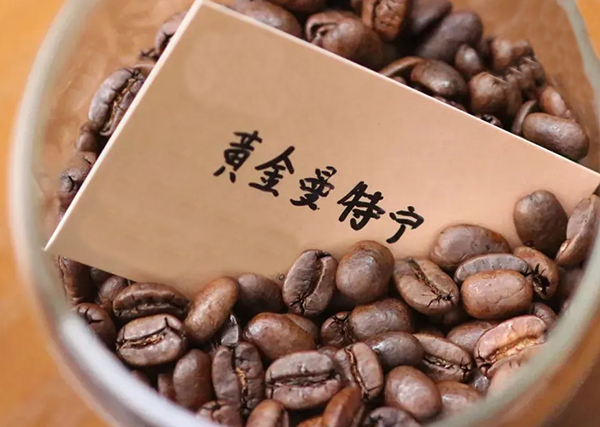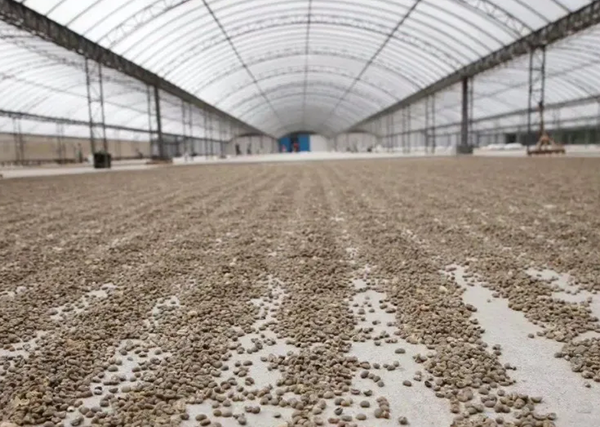Why do Indonesian Mandheling coffee beans use wet hulling?
When it comes to Shenhong coffee, many people will think of Asian coffee beans, the most common of which is coffee from Indonesia. Mandheling coffee, in particular, is famous for its mellow and fragrant taste. At present, there are two types of Mandheling coffee in Qianjie Coffee, namely Lindong Mandheling and Golden Mandheling. Golden Mandheling coffee beans are brewed using the wet hulling method. After entering the mouth, there will be roasted toast, pine, caramel, and cocoa flavors. The taste is rich and mellow, the overall layers are varied, rich, and balanced, and the aftertaste has a lasting caramel sweetness.


People who often buy Mandheling coffee will ask why wet hulling is common in coffee processing methods? It is mainly due to local conditions. Indonesia is the largest archipelago country in the world. It is located in the tropics and mainly has a tropical rainforest climate. The average temperature throughout the year is between 25-27℃. Most areas are hot and rainy, the climate is warm and humid, the sunshine time is short, and the humidity is as high as 70%~90% all year round. Therefore, the rainy weather makes it difficult for Indonesia to dry coffee berries through long-term sun exposure like other countries. In addition, during the washing process, after the coffee berries are fermented in water, it is difficult to get enough sunlight to dry them.
Therefore, the wet hulling method (Giling Basah in Indonesian) was born. This treatment method is also called "semi-washing treatment". The treatment method is similar to traditional washing, but different. The early stage of the wet hulling method is the same as shampooing. After a short period of sun exposure after fermentation, the sheepskin layer is directly removed when the moisture content is high, and then the final drying and drying are carried out. This method can greatly shorten the sun exposure time of coffee beans and can be dried faster.
In addition, Indonesia was colonized by the Netherlands at that time, and coffee planting and export were also controlled by the Dutch. At that time, the wet hulling method could effectively shorten the coffee processing time and reduce labor input. The profit margin was large, so the wet hulling method was widely promoted in Indonesia.
Now, after the coffee berries are harvested, the poor quality coffee will be selected through flotation, and then the skin and pulp of the coffee fruit will be removed by machine, and the coffee beans with pectin and parchment layer will be put into the water pool for fermentation. During the fermentation, the pectin layer of the beans will be decomposed, and the fermentation will be completed in about 12 to 36 hours, and the coffee beans with parchment layer will be obtained. After that, the coffee beans with parchment layer are placed in the sun for drying. This depends on the weather. After drying, the coffee beans are reduced to 30%~50% moisture content. After drying, the parchment layer of the coffee beans is removed by a shelling machine, and finally the moisture content of the coffee beans is reduced to 12% by drying.


Although this method is very suitable for the local climate and speeds up the processing process, this method also has disadvantages, that is, it is easy to produce sheep's feet beans. Because the process of using a shelling machine to remove the parchment layer of coffee beans is very violent, it is easy to crush and squeeze the coffee beans while removing the parchment layer, especially at the front and back ends of the coffee beans. Some coffee beans will form cracks similar to sheep's hooves, so people call these beans "sheep's hoof beans". However, it is rare to find "sheep's hoof beans" in the PWN Golden Mandheling coffee beans currently purchased. This should be due to the improvement of the processing process.
The current PWN Golden Mandheling is produced by Pwani Coffee Company. Almost all of the best producing areas in Indonesia have been acquired by this company, so most of the coffee beans produced by PWN are boutique coffee. And PWN has registered the trademark of Golden Mandheling, so only the coffee produced by PWN is the real "Golden Mandheling".
After purchasing the coffee beans, PWN will arrange for manual selection three times to remove the beans with defects, small particles, and ugly beans. The remaining coffee beans are large and full with small flaws. This can improve the cleanliness of the coffee, so the price of Golden Mandheling is much higher than other Mandheling.
For more coffee industry consultation, click to follow YPAK-PACKAGING
Post time: Oct-18-2024







